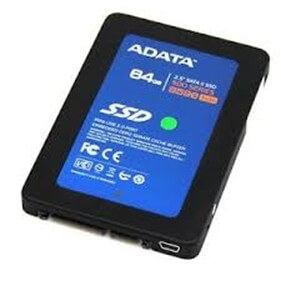R Programming
R Vs Python: What’s the Difference?
R and Python are both open-source programming languages with a large community. New libraries or...
In this article of SSD vs HDD differences, we will learn the key SSD and HDD difference. But before jumping into the differences, let’s first understand “What is HDD?” and “What is SSD?”. We will start with HDD:
An HDD uses magnetism, which allows you to store data on a rotating platter. It has a read/write head that floats above the spinning platter for Reading and Writing of the data. The faster the platter spins, the quicker an HDD can perform. HDD also consists of an I/O controller and firmware, which tells the hardware what to do and communicates with the remaining system. The full form of HDD is Hard Disk Drive
In this SSD vs HDD article, you will learn:
Solid State Drive (SSD) is a non-volatile storage device that stores and retrieves data constantly on solid-state flash memory. However, this data is stored on interconnected flash memory chips instead of platters, which makes them faster than HDDs. It provides better performance compared to HDD.

The hard disk is made up of a number of spinning magnetic platters that store data and a number of reading/write heads on mechanical arms that move on the surface of the platters.
To read or write data at a certain sector of a platter, the head requires to move to the appropriate position and then need to wait for the sector to pass underneath it when the platter rotates.

SSD drive works completely different than a HDD. It uses a solid state medium, typically NAND (often known as flash). Data is written to or read from the NAND by a controller, which is consider the brains of the device.
With SSD, there is no variable seek time or rotational latency because all the parts of the SSD can be accessed in the same amount of time. SSD read and write speeds are uneven, so data reads are very fast, but SSD write speeds are quite slower. That is because SSD storage is made up of individual NAND cells, which helps you to store one bit of data, and groups of cells are organized into pages. Moreover, groups of pages are organized into blocks.
In terms of speed, SSDs are much faster than HDDs because SSDs does not have electrical circuitry and moving parts as HDD. A typical 7200 RPM HDD can deliver read/write speed of 80 to 160 MB/s while a typical SSD can deliver read/write speed of 200 to 550 MB/s which makes it an ideal choice for better performance.

Here are the differences between SSD and HDD
| Hard Disk Drive | Solid State Drive |
| HDD has longer Read and Write time. | SSD has a shorter Read and Write time. |
| HDD has higher latency. | SSD has a lower latency. |
| HDD supports fewer I/O operations per second (IOPS). | SSD supports more I/O operations per second(IOPS). |
| Over a longer time, and with larger files stored on an HDD, there is a high chance of fragmentation. | Fragmentation doesn't occur on an SSD drive. |
| HDD is available in various different capacities. | An SSD drive offers limited storage capacities. |
| HDD stands for Hard Disk Drive. | SSD stands for Solid State Drive. |
| HDD offers a slower speed for reading and writing data. | SSD is faster at reading and writing data. |
| An HDD weighs more. | SDD drives are lighter than HDD drives as they don't have the rotating disks spindle, and mirror. |
| The performance of HDD drives worsens because of the fragmentation. | SSD drive performance is never impacted by fragmentation. |
| The moving parts of HDDs make them vulnerable to crashes and damage because of vibration. | SSD drives can tolerate vibration up to 2000Hz, that is more than HDD. |
| HDD contains moving mechanical parts, like the arm. | SSD does not contain mechanical parts, only electronic parts like ICs. |
| HDD drive is older and more traditional. | SSD is a newer type of storage drive. |
| HDD can produce noise due to mechanical movements. | SSD does not produce noise. |
| HDD are usually 3.5" and 2.5" size for desktop and laptops. | SDD is available in 2.5 inch, 1.8" and 1.0", increasing the available space in a computer, especially desktop or server. |
| The HDD has moving part and magnetic platters. With more uses they are prone to fail. | The SDD drive has no moving parts. With more uses they are less likely to fail. |
Here, are pros/benefits of using HDD:
Here, are pros/benefits for using SSD drive:
Here, are drawbacks/cons of using HDD:
Here, are drawbacks/cons of using SSD
If the price is not a constraint, our vote goes to SSD. They are super-fast, durable, reliable.
If your application needs a very large amount of storage without frequent R/W (example archiving/backups) go for HDD.
Though SSD is our # 1 choice
R and Python are both open-source programming languages with a large community. New libraries or...
Audio editing software is a program that allows making changes in audio data. This program will...
A bivariate relationship describes a relationship -or correlation- between two variables, and . In...
Software engineering is defined as a process of analyzing user requirements and then designing,...
Big Data Testing Big Data Testing is a testing process of a big data application in order to...
In this tutorial, you will learn select() Filter() Pipeline arrange() The library called dplyr...